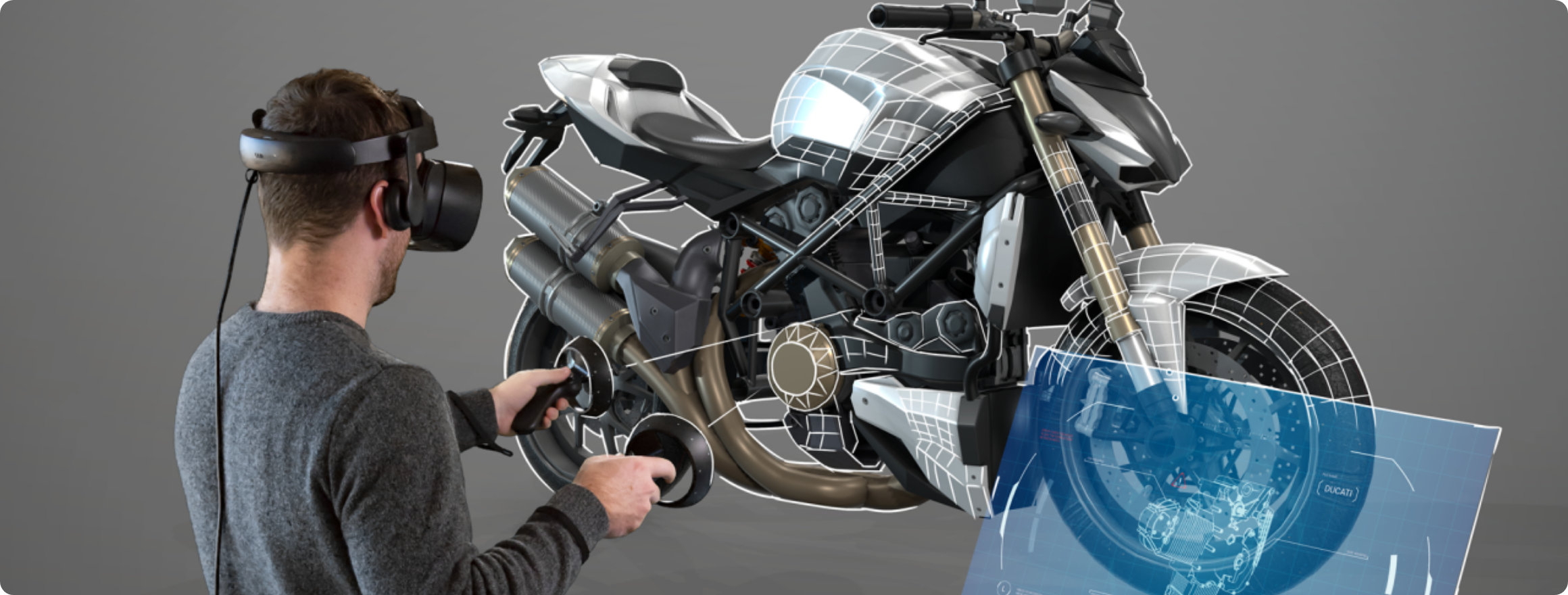
What do you do when you are in the early concept development of the design process and want to get user feedback to inform future development? Maybe you would 3d print or hand prototype your design. Putting an early mockup of your design in the hands of the user for them to assess is an important part of any user centered design process. But what if your design concept involves autonomy, a UI or a complex series of physical interactions with the user? Without additional functionality, a physical low fidelity mockup in this context loses its effectiveness in garnering insight.
“Product design” as a whole has shifted. Increasingly, the objects that we design and use in our daily lives have a component of digital interaction and/or are part of a larger virtual ecosystem. These challenges of gaining early insights from low fidelity mockups is epitomized when designing something like an autonomous robot. This design process sometimes involves years of hardware and software development for even basic functionality. So how can designers run ahead of this development to put a concept in front of users early enough to inform how such a complex product should be designed to work in these interactions to instill trust, engagement, and even enjoyment?
Let’s say that we are designing a new autonomous robot to deliver room service orders to guests at a hotel. The first issue to address is how people react to an autonomous device sharing their space. How close is too close? Is there a violation of a social contract by placing this robot in what was otherwise a dedicated space for people? How do they expect the robot to behave? Most importantly, how do you begin to probe those expectations of the customer when hardware and software development are not mature enough to represent the final design concept? You cannot put an engineering prototype in close proximity with the user without creating a potential safety risk. If you were to make a remote-controlled mockup of the robot, how can you truly test user comfort with autonomy when the test subject knows that there is a human in control? And how do those reactions to autonomy change with multiple robots? This is where VR stands out as a remarkably effective tool for gaining insight.
Utilizing VR in complex product interactions allows designers to not only save on the resource cost of hardware prototyping and manufacturing, but also allows them to iterate much more rapidly and push boundaries of comfort with users without ever putting the user at risk. By conducting user testing in VR, not only can you present a complex and interactive product experience in front of the user, but you can also transport them to specific environments and scenarios with the push of a button. This enables the development of not only a guiding model for the design, but also a guiding model for software development as VR interactions can inform what does and does not work in interactions between humans and autonomous systems. However, VR still has its shortcomings and is not the definitive means of user testing in product development.
Virtual reality for user testing and concept evaluation is simply another tool in our toolbox as designers and design researchers. While it offers new capabilities for testing and evaluation, there is a major tradeoff between a VR mockup and a physical one… namely the nature of “virtual” reality itself. There is no physical feedback, and while there is a strong sense of depth perception, it is not the same as an actual physical interaction. While augmented reality may better incorporate both the physical and virtual, the virtual assets can stand out as even more artificial than a full virtual immersive experience because of the difference in fidelity of virtual vs real world objects. Does this eliminate the need for physical prototyping and low fidelity physical mockups? No. But VR enables designers and developers to test more complex products earlier in the design process with users where alternative approaches are less feasible due to complexity and cost.
While the role of a designer can be reductively described as “stylist” I think the true value we bring to a team are as story tellers both outwardly to the customer/target user and internally. VR enables us to share virtual models without “CAD scale blindness” and to collaborate more seamlessly even while remote. Having a VR headset brings even remote collaborators together and immerses them in a 3d virtual experience. Meaning there is less misunderstanding and room for interpretation than just a concept sketch, 2d render, or even a 3d CAD model on a screen.
As this technology continues to mature and becomes more accessible, I see the use of VR as an increasingly valuable tool for designers. Where paper and markers gave way to Cintiqs and iPads, I could see CAD modeling and user testing making room for VR modeling, collaboration, and design evaluation. We are entering a new frontier for design and media with VR that will undoubtedly influence how we live and work. Pick up a headset and explore the possibilities for yourself. There is plenty of undiscovered opportunity and impact to be harnessed with this new technology!
Back to Insights + News